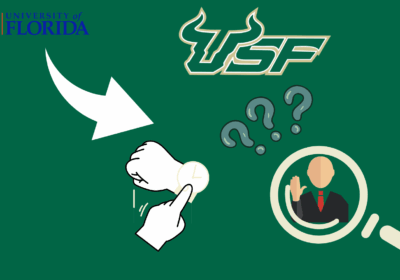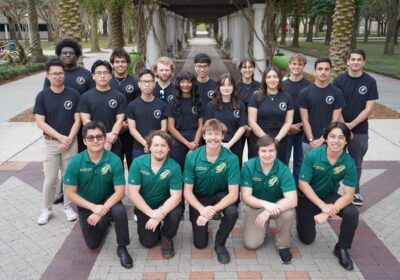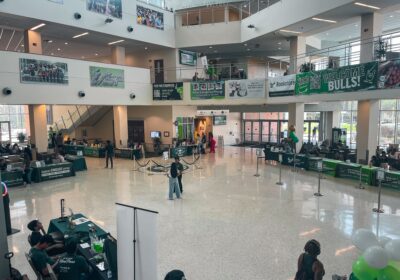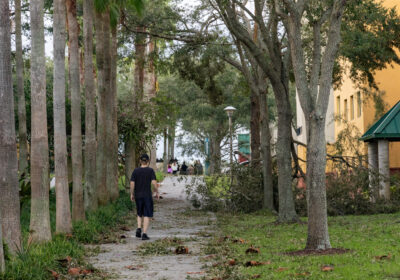USF researchers face uncertainty over NIH grant reductions

As cuts to federal funding from the National Institutes of Health (NIH) went into effect on Monday, USF faculty warned of potential consequences for medical research.
Last Friday, the NIH said new and existing grants will see budget cuts to overhead research costs, which at USF includes maintenance to buildings, equipment and some staff, or “indirect cost rate cap.”
USF had an indirect cost rate of 50%, which dropped to 15% on Monday. The cost rate cap limits the percentage of funding given to support research.
Dr. John Jarstad, residency director and vice chairman of the ophthalmology department at USF, said certain professors rely on funding from the NIH for their clinical research.
Jarstad, who spent six months doing research at the NIH, said those faculty members are worried about what their future may look like.
“They’re very concerned there may be cuts in government funding for high research,” Jarstad said. “If that were to happen, it would really affect them seriously.”
Last year, the NIH gave USF $227 million in research funding, according to the university. Over $50 million from that amount went towards diabetes research, the largest share of the NIH funding.
At the time of publication, it was not clear how much of the total amount was related to overhead costs.
Though the policy was temporarily barred by a federal judge, the pause only went into effect in 22 states, two of those being California and Illinois. The judge’s ruling is only in effect in certain places because state attorneys filed a lawsuit against the order.
Florida was not one of the states where the ban was paused.
Related: Some USF students reconsider their careers after Trump’s DEI cuts
The university said it is “monitoring the situation” regarding the NIH funding in an updates page. A USF spokesperson referred The Oracle to the same website when asked for comment.
“At USF and other universities across the country, dedicated NIH researchers are working tirelessly to find breakthroughs in treating debilitating diseases and discover cures to deadly illnesses,” the university’s updates page reads. “We recognize that cuts to reimbursement of indirect costs would significantly impact medical research in our nation.”
The funding cap was directed by President Donald Trump’s administration.
About $9 to $35 billion went into overhead costs last year, according to the NIH. The agency said the new policy would “save more than $4 billion a year effective immediately.”
Related: USF achieved record-breaking research funding in the first full year at AAU
Grant cuts will not affect privately funded areas of study.
Jarstad said while cuts won’t completely eliminate USF researchers’ projects, they could affect a lot of students down the road.
“It would really affect some of the PHDs and scientists who are doing basic science research,” Jarstad said. “That’s where the medical students and faculty at the medical school come in.”
While USF faculty say other federal changes may not have as big of an impact as NIH cuts, several federal actions since Trump took office could impact the country’s involvement with international health.
Trump’s administration is also making cuts to and dismantling the U.S. Agency for International Development (USAID), which provides humanitarian aid and developmental assistance to other countries. Trump also withdrew the U.S. from the World Health Organization (WHO).
Related: Panel at USF discusses Trump’s pledge to end the Department of Education
Dr. Sten Vermund is the senior associate vice president of USF Health and dean of USF’s College of Public Health.
Vermund said withdrawing from the WHO is unlikely to significantly impact research at USF the way cuts in NIH funding and USAID will.
USAID focuses on funding five key areas. It watches for diseases, promotes vaccinations, trains health officials, improves labs and more, Vermund said.
Vermund said reduced funding for international humanitarian projects and other international trips are the most “obvious” examples of how students will be impacted, especially those who go to international agencies for internships or work opportunities.
All the cuts and shutdowns will affect the university and students as a whole, Vermund said.
“The university itself and the medical school will be disproportionately affected, though we will have substantial cuts in the project of public health as well,” Vermund said. Vermund said reducing federal research grants could limit opportunities and hurt studies.
Jarstad said USF will need more fundraisers to compensate for the potential lost funding.
“I went to a USF football game, and at halftime, they brought out a long list of every donor who had given more than $1 million,” Jarstad said. “There is a real need for more of that because we could use the funding for our own research here.”







